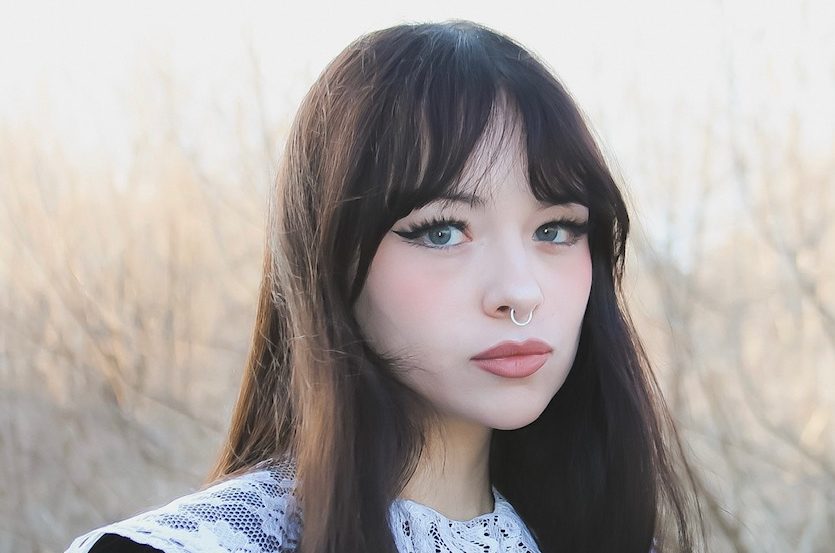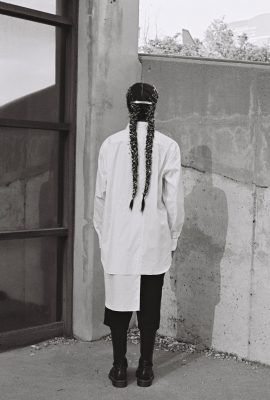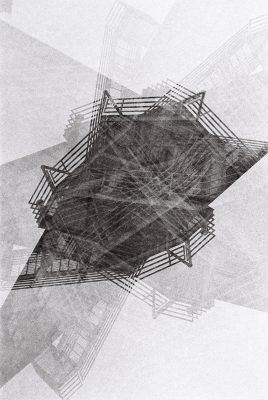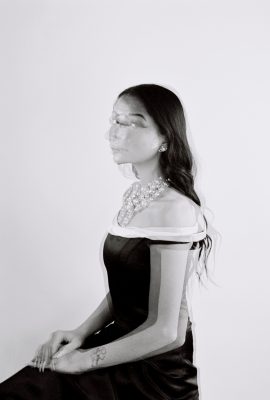
A Passion Behind the Lens: Irlanda Trujillo
Art
When Salt Lake City–based film photographer Irlanda Trujillo went to get her eyes checked at Vis. Optics, she spotted a pair of stunning, designer-brand Kuboraum sunglasses. Although the price exceeded what Trujillo was willing to pay, Stephen Lundquist, owner of Vis., allowed her to borrow the pricey spectacles for a photoshoot and her photographs were a success.

The photographs feature Trujillo’s friend Brittany Mijares wearing the glasses with safety pins running down to the end of her waist-length double braids. After seeing her work, Kuboraum reached out to Trujillo and reposted her photographs on social media. Those images, as well as others, will be on display on March 19 as a part of the 801 Salon series hosted throughout the year. The salon was started by Vis. Optics as a way to give artists a space to showcase their work. They feature a different SLC artist every third Saturday of the month at their location on 801 800 E.
“When I have people look at my images I don’t want them to ask, ‘How?’ but, ‘Why?”
It’s important for Trujillo that people see works of art in their physical form and not just through social media where photos are easy to scroll through. She wants her audience to take the time to form their own opinions about her work, so her goal is to participate in more shows. Trujillo’s images for the exhibit were curated around what was most meaningful to her and she hopes they will create meaning for her audience. In general, her process for curating is “almost always” feeling-based. She says, “When I have people look at my images I don’t want them to ask, ‘How?’ but, ‘Why?”
Trujillo’s first DSLR camera was passed down from her mother when she was 15, and she quickly discovered a passion behind the lens. However, it wasn’t until she discovered film photography a few years later that Trujillo truly felt a connection to the medium.

She was driven by the intentionality of film that didn’t feel present in digital photography. Trujillo believes that because she lives in a highly documented era which sometimes feels disposable and temporary, she’d rather create a more meaningful moment. “I feel like through creating these images, I can keep them for myself and enjoy [moments] for a little bit longer. I think that’s really beautiful and poetic,” Trujillo says.
“I feel like having your photo taken can be very vulnerable if you’re not used to it.”
Trujillo only shoots in black-and-white film, arriving at this decision after reading Road to Seeing by famous photographer Dan Winters, in which he explores the work of 18th-century photographers. “It was emotional seeing the work and emotional for me to notice that there was no color—you just have to fill in the blanks,” Trujillo says.

In her portraiture, 19th-century photographer Yousuf Karsh is the main source of inspiration. Karsh would write synopses about the people he photographed, a process Trujillo found beautiful, as they created a connection between the photographer and the model. “I feel like having your photo taken can be very vulnerable if you’re not used to it, so a lot of the people I photograph are not professional models,” Trujillo says. She also likes to focus on photographing other Hispanics in SLC because they share a similar background and can relate to a lot of experiences growing up. This informs the styling of her models, who sometimes have Hispanic-influenced hairstyles or a Ranchero look.
Trujillo’s advice to newbies getting into film photography? “To quote Joseph Beuys, ‘everyone is an artist’, and I definitely believe that. I feel like, in a world where we do have so many photographers, that shouldn’t discourage you from taking your own photographs,” Trujillo says. She encourages people to shoot anyway because everyone has a different perspective that lends itself to interesting images. On a more technical note, she finds that writing down f-stops and shutter speeds for different light conditions in a notebook is a good idea for beginners because film takes a lot of work to ensure the images are exposed properly and come out well.
If you’d like to connect with Trujillo or check out her photography, visit her Instagram @irlandat.